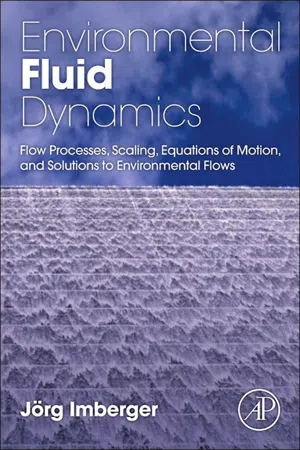Chemistry
Pressure and Density
Pressure refers to the force exerted on a given area, while density is the mass of a substance per unit volume. In chemistry, pressure and density are important properties that affect the behavior of gases and liquids. Pressure can influence the density of a substance, and changes in density can impact the pressure within a system.
Written by Perlego with AI-assistance
Related key terms
Related key terms
1 of 4
Related key terms
1 of 3
5 Key excerpts on "Pressure and Density"
- Mark Kernion, Joseph A. Mascetta(Authors)
- 2022(Publication Date)
- Barrons Educational Services(Publisher)
3 ), milliliter (mL), or liter (L).TIPMatter occupies space and has mass.An example of how density varies can be shown by the difference in the volumes occupied by 1 gram of a metal, such as gold, and 1 gram of Styrofoam. Both have the same mass, 1 gram, but the volume occupied by the Styrofoam is much larger. Therefore, the density of the gold is much larger than that of the Styrofoam. In chemistry, the typical unit for the density of solids is grams/cubic centimeter and for that of liquids is grams/milliliter. Both of these are temperature dependent. The typical unit for the density of gases is grams/liter at standard temperature and pressure. However, the density of gases is usually much lower than the densities of solids and liquids, which is the reason for the unit of liter in the denominator. This ensures a reasonable amount of mass will be reported for gases. Density is an important differentiating property of matter. It is a quantitative value that can be assigned to all matter based on the definition of matter: anything that has mass and volume.TIPStates of Matter
Matter occurs in three states: solid, liquid, and gas. A solid has both a definite size and a definite shape. A liquid has a definite volume but takes the shape of the container, and a gas has neither a definite shape nor a definite volume. These states of matter can often be changed by the addition or subtraction of heat energy. An example is ice changing to liquid water and finally steam.Chemical and Physical Properties
Physical properties of matter are those properties that can usually be observed with our senses. They include everything about a substance that can be noted when no change is occurring in the type of structure that makes up its smallest component. Some common examples are physical state, color, odor, solubility in water, density, melting point, mass, and weight. All of the properties just listed, except for mass and weight, are independent of the size of the sample of matter being described and are referred to as intensive. The intensive nature of a property does not preclude it from being quantitative, however. Solubility, density, and melting point are examples of intensive properties. They are measured properties and contain numbers in their description. Mass and weight are also quantitative properties of matter but depend on the size of the sample. These types of properties are referred to as extensive- eBook - ePub
The Concise Industrial Flow Measurement Handbook
A Definitive Practical Guide
- Michael A. Crabtree(Author)
- 2019(Publication Date)
- CRC Press(Publisher)
ρ ).Mathematically, density is defined as the mass divided by volume:
whereρ =m V(2.3) ρ = densitym = massV = volumeAgain, when comparing Figures 2.2a and b , for the given volume enclosing the two substances there are more atoms enclosed by the same volume in (a) than in (b) and thus the mass would be much higher and, consequently, its density.Figure 2.2 Since there are more atoms enclosed by the same volume in (a) than in (b) the mass would be much higher as would its density.In SI units, density is usually described in kg/m 3 – with several SI-derived units that include: g/cm 3 or kg/L .In the FPS system there are again a number of units used to describe density including: lb/ft 3 , lb/inch 3 and lb/gal .2.4 Specific GravityThe specific gravity (often referred to as the relative density ) is a dimensionless figure in which the density of the material is referenced to water – simply, is it heavier or lighter than water.Since the densities of the sample and of water vary with temperature and pressure, both the temperatures and pressures at which the densities were determined must be specified. Measurements are normally made at 1 nominal atmosphere (1,013.25 mbar). However, since specific gravity is usually related to highly incompressible fluids, the variations in density caused by pressure are usually neglected.The density of water is normally taken at its densest (3.98 ≈ 4°C). Table 2.1 shows some typical values of specific gravity for a variety of incompressible liquids.Table 2.1 Some Typical Values of Specific Gravity for a Variety of Incompressible Liquids Fluid Temperature (°C) Specific Gravity (SG) Alcohol, ethyl (ethanol) 25 0.787 Alcohol, methyl (methanol) 25 0.791 Ammonia 25 0.826 Benzene 25 0.876 Butane, liquid 25 0.601 Crude oil, California 15.55 0.918 Crude oil, Texas 15.55 0.876 Ethane - 890.572 Ether 25 0.716 Ethylene glycol - eBook - ePub
- Jerry Marion(Author)
- 2012(Publication Date)
- Academic Press(Publisher)
flow . In gases, on the other hand, the intermolecular forces are quite weak and the molecules have almost no interaction. Consequently, gas molecules are free to move in all directions, each molecule moving independently of the others.In this chapter we find that liquids and gases have many similar properties. Indeed, in any physical effect that depends only upon the mobility of the molecules in the substance (as, for example, in the transmittal of pressure to all parts of a container), liquids and gases behave in the same way. Differences arise when the degree of molecular mobility is important (as, for example, in the process of evaporation). As we discuss these two states of matter, we again keep in mind the fact that all matter consists basically of atoms and molecules.10-1 PRESSURE
Force per Unit Area
Fluids can exert forces. The water in a lake exerts a force on the bottom, and the atmosphere exerts a force on the Earth. How can we conveniently describe these forces? Because fluids are mobile substances and deform themselves to conform to the shape of any container, there is no unique point of contact between a fluid and the surface on which it exerts a force. Each small part of the surface receives its share of the total force exerted by the fluid. We can describe this situation in terms of the force per unit area exerted by a fluid on a surface. This we call the pressure:pressure=force areaP =(10-1)F A(10-1)The dimensions of pressure are newtons per square meter (N/m2 ), or pascal (Pa).Any force—in particular, the force exerted by a fluid—is a vector quantity. In what direction does the force exerted by fluid pressure act? If the fluid is not in motion, the force vector is always perpendicular to the surface on which it acts, as shown in Fig. 10-1 . If the force were not perpendicular, there would be a component of the force parallel to the surface. Some internal rigidity is required for a substance or object to exert a parallel force on another object (Can you see why this is so?), but a fluid has no such rigidity and therefore cannot exert a parallel force. Figure 10-1 shows a liquid in a container, but the situation is the same for a gas in a container, such as the balloon shown in Fig. 10-2 - eBook - ePub
Making Physics Fun
Key Concepts, Classroom Activities, and Everyday Examples, Grades K?8
- Robert Prigo(Author)
- 2015(Publication Date)
- Skyhorse(Publisher)
2 Fluids and Buoyancy GASES AND LIQUIDS AS FLUIDSIn the conceptual discussion that follows, the word molecule will be used to refer to both an atom (basic unit of an element in nature) and a molecule (two or more atoms bound together to form a composite entity).Gases like air and liquids like water are considered separate states of matter, with different physical properties. Gases are generally low in density with their molecules far apart from each other, while liquids are much more dense, with their molecules essentially touching each other. A gas tends to fill up the space it occupies (air in a room), while liquid in a container (water in a glass) fills a space only up to a specific level (with gravity present). Gases are relatively easy to compress, while liquids are very difficult to compress.But gases and liquids also have some very important properties in common. Both gases and liquids flow—winds and rivers. Flowing gases and liquids can exert forces—wind power and waterpower. Objects can “fly” in both media—birds in air and fish in water. Both gases and liquids exert pressure on objects placed within them or on the walls of the container they occupy—air pressure and water pressure. Both gases and liquids provide buoyant forces on objects placed within them—hot air balloon floating in air and boat floating in water. Because gases and liquids share many important properties and because many of these properties can be understood in terms of the same physical principles, it is both convenient and common practice to place both gases and liquids within the single category of fluids.PRESSURE IN A GAS AND ATMOSPHERIC PRESSURE ConceptsThe large numbers of molecules that constitute a gas (like the air in a room, primarily nitrogen 78%, oxygen 21%) are in constant motion. Sometimes these molecules bounce off (interact with) each other, but more often than not they miss each and reflect off objects placed within the container and off the walls of the container. The molecules are not all moving with the same speed or in the same direction. In fact, the motion is extremely chaotic, with molecules moving with a spectrum of speeds in quite random directions. The temperature of the gas gives a statistical measure of the speed of the molecules. In fact, the temperature of a gas gives a measure of the average speed of the molecules. Higher temperatures mean higher average molecular speeds. For this reason, the molecular motion of a gas is often referred to as the thermal motion - eBook - ePub
Environmental Fluid Dynamics
Flow Processes, Scaling, Equations of Motion, and Solutions to Environmental Flows
- Jorg Imberger(Author)
- 2012(Publication Date)
- Academic Press(Publisher)
−8 m for a liquid, the mean properties of the molecules do not change. Continuum mechanics thus deals only with the average properties of the molecules and assigns these mean values to the centroid of the averaging volume; these mean properties are well-defined for any averaging volume greater than a few molecular spacing and less than 1 mm. All conservation equations in continuum mechanics deal only with these mean properties and there is no attempt made to derive equations for each molecule and then average; as we shall see the conservation equations are derived, from first principles, for the average properties and applied to volumes larger than 1 mm; such volumes are called fluid particles. It is important to visualize such a fluid particle. It is a collection of molecules over which we average all properties at a particular point in space and at a particular time. However, as time varies, the molecules will not always be the same; molecules continuously escape and enter the fluid particle. In this way, neighboring fluid particles transfer their properties to their neighbors; molecules escaping from a fluid particle with a large momentum into a fluid particle with less mean momentum will cause the slower particle to accelerate; this is the origin of internal friction. Similarly, molecules in a fluid particle at high temperature will have a high level of excitation; when they escape and move into a neighbor with a lower temperature, they will excite the molecules in their new environment and so raise the temperature of the neighbor. This is called diffusion of heat.1.3.4 Mass of a Fluid
Density ρ : In line with the continuum hypothesis defined above, the density ρ of a fluid is given by:(1.3.3)where the limit is taken to between 1 mm and 10−5 mm. This density may change from point to point or even with time and in general:(1.3.4)Once the density is defined it is convenient to form specific definitions for related properties that are often encountered in environmental flows.Specific weight γ (N m−3 ):(1.3.5)Specific gravity s :(1.3.6)Sigma t σt(kg m−3 ):(1.3.7)Specific volume υ (m3 kg−1 ):(1.3.8)1.3.5 Pressure and Compressibility
Consider a fluid sample inside a press where a piston exerts a pressure on the fluid sample. The pressure p exerted by the piston is defined as the force per unit area (F /A ). The units of pressure are N m−2 or Pascals. The fluid may be compressed while keeping the temperature constant (isothermal compression) by extracting any excess heat, or the container may be insulated and heat prevented from escaping (adiabatic compression); two pressure volume curves result because during adiabatic compression the temperature of the fluid rises and, as it does, so does the pressure.From common experience, we know that gases are more compressible than liquids; the reason for this lies in the greater molecular spacing in gases. Hence the pressure rises much faster in liquids for the same compression ratio as for gases. The ease with which a fluid may be compressed is quantified by the compressibility of the fluid. The bulk coefficient of compressibility of a fluid,Eυ, is defined as the change in pressure for a unit fractional volume change curves:(1.3.9)and soEυhas units of pressure. ObviouslyEυwill have a different value depending whether the volume changes are brought about under isothermal or adiabatic conditions; typical values for isothermal compression for water are shown in Table 1.3.1
Index pages curate the most relevant extracts from our library of academic textbooks. They’ve been created using an in-house natural language model (NLM), each adding context and meaning to key research topics.
Explore more topic indexes
Explore more topic indexes
1 of 6
Explore more topic indexes
1 of 4




